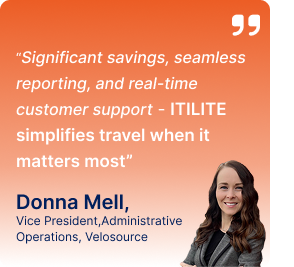
Corporate ride sharing involves sharing rides in a single vehicle to reach a common destination. While it’s widely known for its convenience for individual commuters, it has also evolved to cater to the unique needs of corporate businesses.
Corporate ride sharing programs facilitate shared transportation for employees traveling to and from work, meetings, or other business-related events. These programs often leverage specialized software and services to optimize routes and reduce costs, promoting sustainable corporate travel, and making them an attractive option for companies of all sizes.
Companies that promote corporate ride sharing for employees demonstrate their commitment to travel sustainability. This aligns with green initiatives and can help decrease the environmental impacts caused by transportation.
Why is Sharing a Ride Better Than Traditional Ways of Commuting?
Traditionally, driving to work alone in cars causes problems like air pollution, greenhouse gas emissions, and traffic jams. These issues are becoming more concerning, and companies are realizing they need to do something to increase travel sustainability.
Today, businesses are becoming more aware of how their actions impact the environment. They are actively looking for ways to reduce their carbon footprint and promote environmentally friendly ways of doing things.
One such way is through corporate ride sharing programs. These programs are excellent for travel sustainability because they reduce the number of cars on the road, which means less pollution and a more eco-friendly approach to employee transportation services.
Besides sustainable corporate travel, companies are also trying to save money. It’s a big deal for businesses, whether they’re just starting or have been around for a while and want to make more profit.
Traditional commuting methods, where employees drive their cars or get expensive transportation allowances, can cost companies a lot of money. However, corporate ride-sharing programs can save money by having more people in each car, using less fuel, and finding the most efficient routes. This all adds up to significant savings for the company.
Benefits For Employees
Less Traffic Congestion: Fewer cars on the road mean reduced traffic congestion. The corporate ride sharing helps ease the strain on road infrastructure, resulting in faster and more efficient commutes.
Lower Stress Levels: Driving can be stressful, especially in heavy traffic. Sharing rides allows passengers to relax, read, or work during the journey, reducing stress and improving mental well-being.
Enhanced Social Interaction: Corporate ride sharing fosters social interactions among coworkers, friends, or strangers who share rides. It can lead to networking opportunities, team bonding, and a sense of community.
Flexible Scheduling: Many ride sharing platforms offer flexible scheduling options, allowing passengers to choose pick-up and drop-off times that suit their needs. This flexibility can improve work-life balance.
Convenient Pickup and Drop-off: Ride-sharing apps provide real-time tracking, making coordinating pick-up and drop-off points easy. This convenience eliminates the hassle of parking and walking long distances to reach your destination.
Reduced Parking Hassles: Finding parking in crowded urban areas can be a nightmare. Corporate ride sharing eliminates the need to search for parking spaces, saving time and reducing frustration.
Step-by-Step Guide to Implementing a Corporate Ride-Sharing Program
Step 1: Define Objectives and Goals
Clearly outline your company’s objectives for the ride-sharing program. Determine what you want to achieve regarding cost savings, corporate travel sustainability, and employee satisfaction.
Step 2: Conduct Employee Surveys
Gather feedback from employees to understand their commuting needs and preferences. This information will help tailor the program to meet their requirements.
Step 3: Choose a Ride-Sharing Platform
Research and select a reliable ride-sharing platform or software solution that suits your company’s needs. Look for features like route optimization, real-time tracking, and reporting capabilities for sustainable corporate travel.
Tips for Choosing the Right Ride-Sharing Platform
Scalability: Ensure that the chosen platform can scale to accommodate your company’s growth and changing commuting needs.
User-Friendly Interface: Select a platform that is easy for employees to navigate, book corporate ride sharing, and track their commute.
Customization: Look for platforms that allow customization to align with your company’s branding and specific requirements.
Integration: Choose a platform that can seamlessly integrate with your company’s existing software systems, such as HR and payroll.
Data Security: Prioritize platforms with robust data security measures to protect employee information and ride data.
Step 4: Set Up Program Guidelines
Develop comprehensive guidelines that outline how the corporate ride sharing program will work. Include information on eligibility, registration, scheduling, and reimbursement procedures.
Step 5: Establish a Communication Plan
Create a communication strategy to inform employees about the sustainable corporate travel program. Use multiple channels, such as email, company intranet, and meetings, to spread the word and provide regular updates.
Step 6: Register Participants
Encourage employees to register for the program. Collect essential information, including commuting routes, preferences, and contact details.
Step 7: Implement Policies and Procedures
Create a set of travel policies that address issues like safety, insurance, vehicle maintenance, and code of conduct for participants. Ensure that all participants understand and agree to these policies.
Step 8: Monitor and Optimize
Continuously monitor the program’s performance using data analytics and feedback from participants. Use this information to make improvements and optimize routes and schedules.
How to Measure the Impact of the Ride-Sharing Program
Measuring the impact of a corporate ride sharing program is crucial for several reasons. It not only helps organizations assess the success of their initiatives but also allows for continuous improvement and evidence-based decision-making.
Key Performance Indicators (KPIs) and Metrics to Monitor
Cost Savings:
- Total cost savings achieved through the program.
- Average cost savings per participating employee.
- Reduction in transportation allowances or subsidies provided by the company.
Environmental Impact and Corporate Ride Sharing
- Total reduction in CO2 emissions.
- Reduction in fuel consumption.
- Decrease in the number of miles driven by employees.
Employee Satisfaction:
- Employee feedback surveys that measure satisfaction with the program.
- Participation rates and the number of employees using the service regularly.
- Employee retention rates and recruitment success linked to the program.
Efficiency and Productivity:
- Average commute time before and after program implementation.
- Productivity metrics, such as increased work hours, project completion rates, or meeting attendance.
- Employee feedback on the impact of corporate ride sharing on their daily routines and job performance.
Safety and Compliance:
- Accident/incident reports and their causes.
- Compliance with program policies and safety guidelines.
- Compliance with local transportation regulations and insurance requirements.
Choose ITILITE and Increase your Travel Sustainability
ITILITE is a corporate travel management software focused on making corporate travel more sustainable. The sustainable corporate travel tracks mileage monitors carbon emissions, and collaborates with organizations like Gold Standard to offset carbon emissions from business travel. Our travel analytics provide deeper insights by analyzing travel data, helping you make informed choices to reduce your carbon footprint and save resources.
Book a demo of ITILITE now to know more about promoting greener corporate travel with responsible practices and smart technology for a better future.












